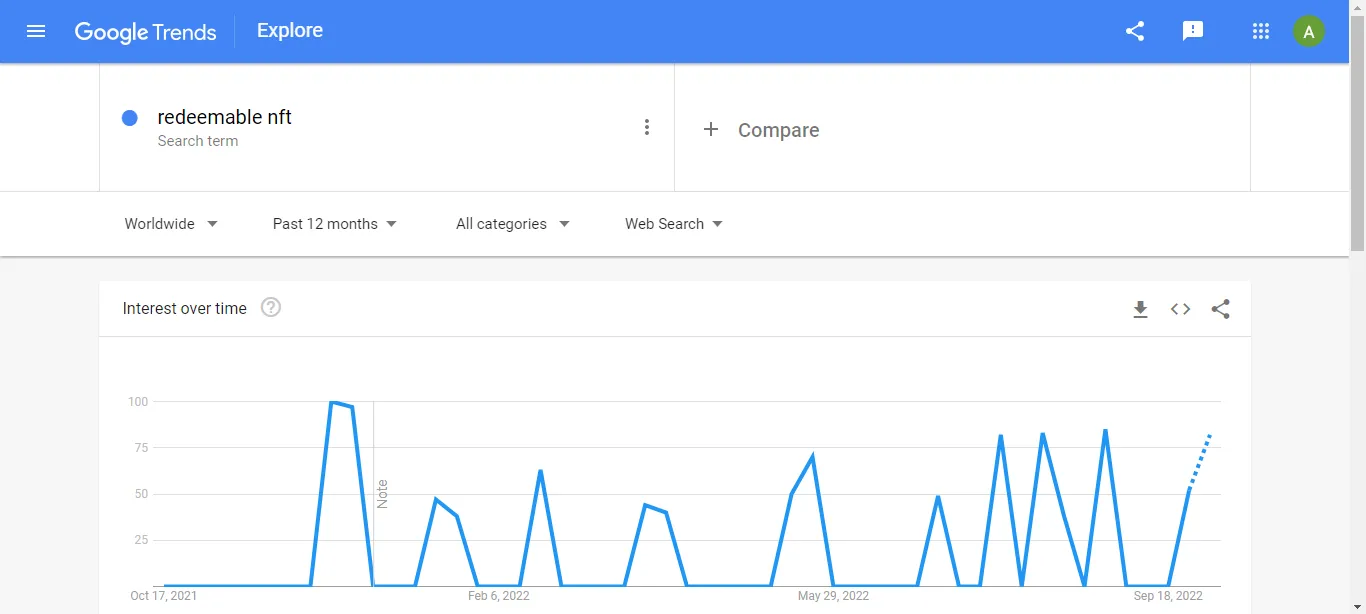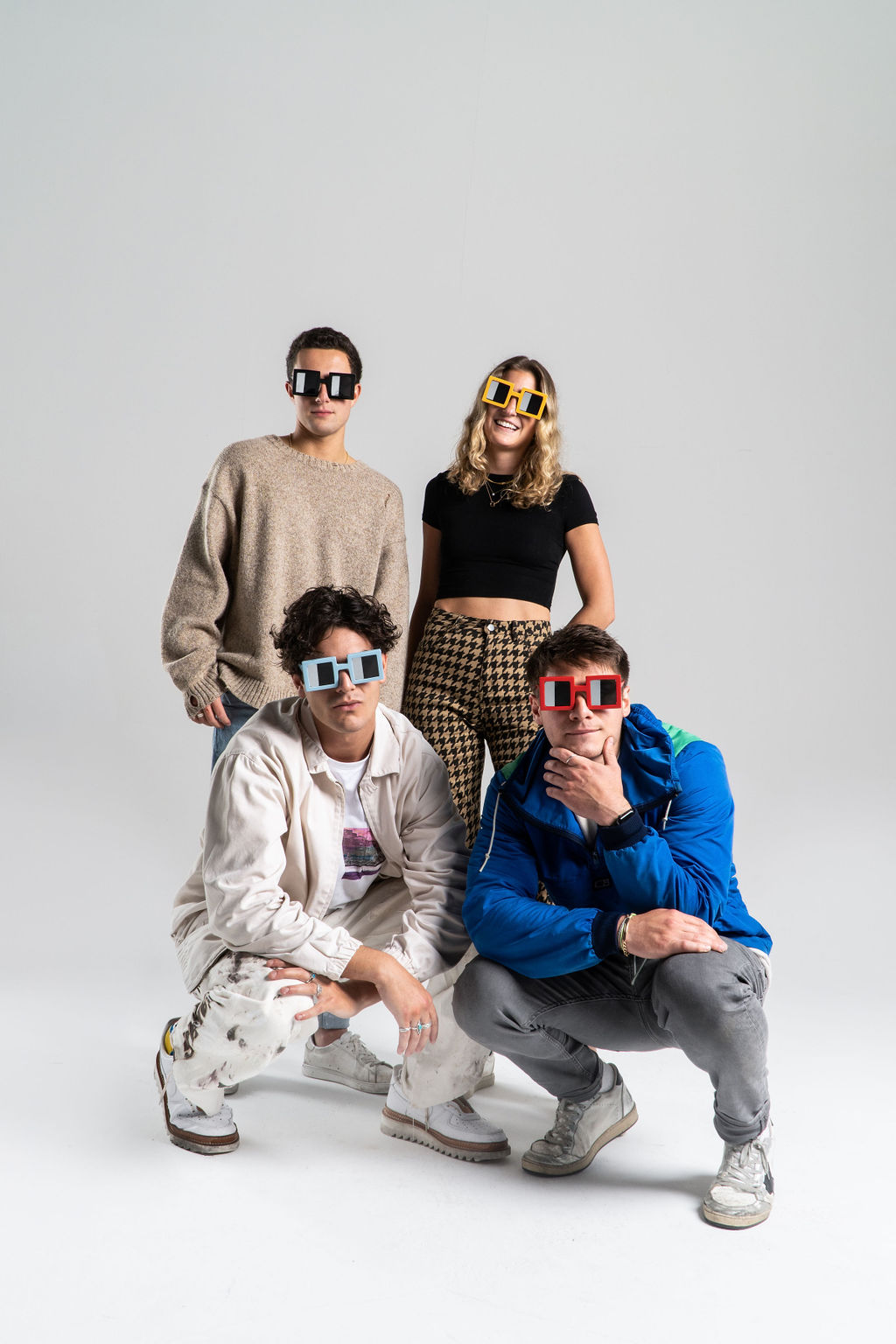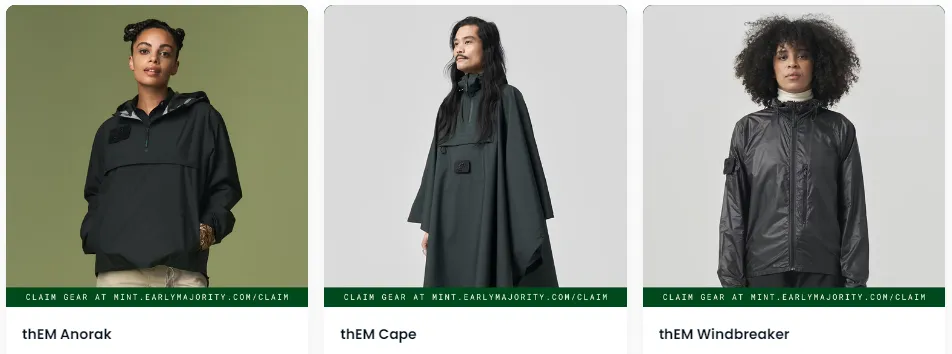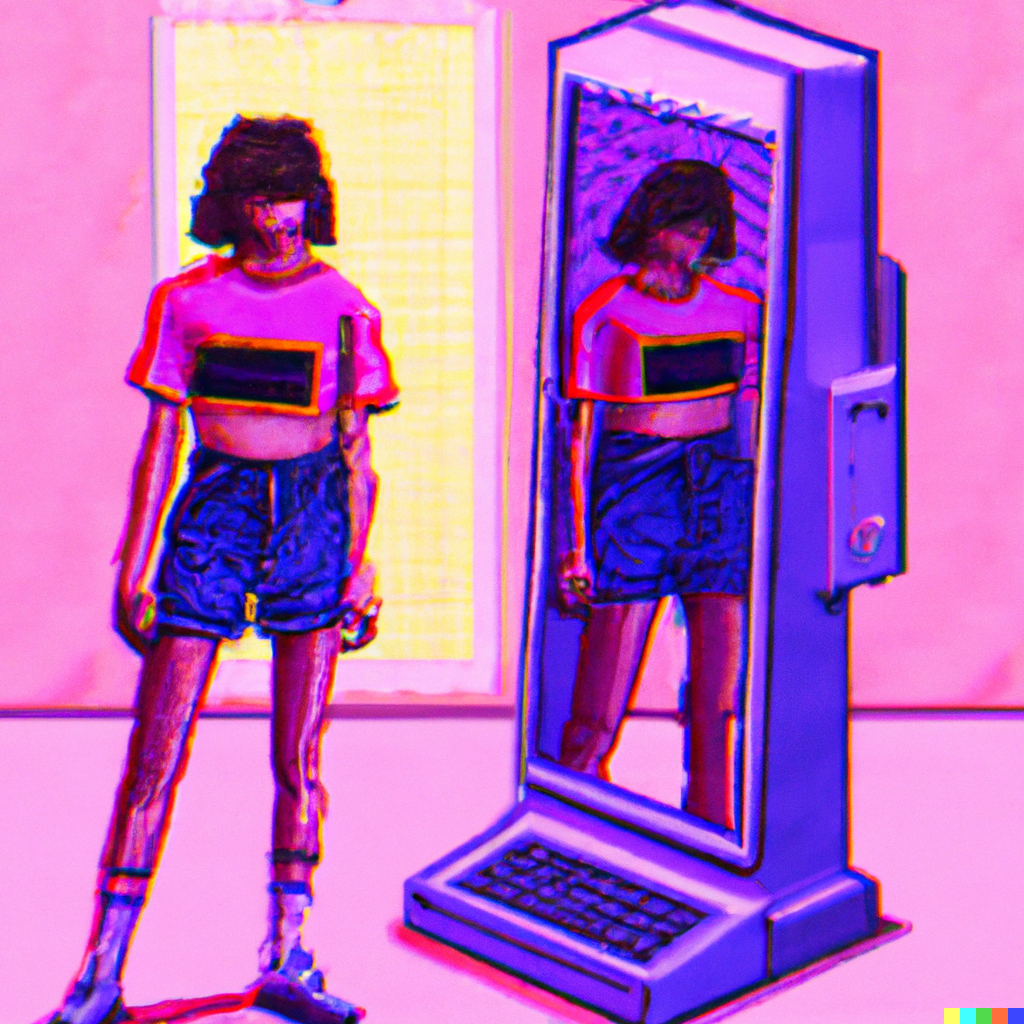The physical and digital worlds are collapsing on each other to inspire new lifestyles and choices for fashion consumers. This has taken many forms across gaming, AR/VR, web3 and more, with some projects at the intersection of all of the above. “Phygital” is a label that is becoming more commonly used to describe the bridging of physical and digital. There seems to be consensus that no one likes this phrase amongst those building in digital fashion. In the words of Karl Lagerfeld, “Trendy is the last stage before tacky” and phygital seems to be on a similar trajectory. To step away from its usage, examples like “redeemable NFT” and “physical NFT” are becoming more popular. When looking up these terms in Google Trends for the last twelve months, it suggests they’re still searched sparingly. Despite this, the screenshot below shows that over the last few months, there’s been an increase in the frequency of search interest for redeemable NFTs.

There seems to be a new redeemable NFT start-up, project or product popping up every day, especially in the months since Kevin Rose discussed the concept on an episode of the Bankless podcast in April. On 30th August 2022, there was even a proposal for a new redeemable NFT standard (EIP-5560). Common features that make redemptions possible are QR codes, NFC chips and token-gating. More often than not, there’s a tenuous relationship between the physical and digital product. While “redeemable” suggests the entitlement to something more through digital ownership, it’s not capturing the many more possibilities that are created through the multiversal incursion of physical and digital realities.

Other names used to describe fashion NFTs with similar features include “full stack consumer products”, Azuki’s “physically-backed NFTs” (PBTs) and gmoney’s “networked products”. The commonality between all these labels is an attempt to describe something that is at the convergence of physical and digital, that is a “convergent NFT” or “convergent fashion”. These umbrella terms capture the range of innovations within this niche, from physical items that allow digital redemptions to the opposite. It abstracts away redeemable actions that are unrelated to bridging the physical and digital. Examples of convergent NFTs can be grouped into the following:
-
Burn-to-redeem: an NFT is burned in order to receive a physical product e.g. Unisocks, Nouns Vision, PHNXX
-
Redeem-and-retain: an NFT is used to redeem a physical product, but it remains held by the user e.g. NFTiff, Dolce&Gabanna via UNXD
-
Redeem-and-replace: an NFT is used to redeem a physical product, but it is replaced by another NFT to signify redemption e.g. RTFKT
-
Redeem NFT from physical product: a physical product entitles the owner to redeem an NFT e.g. RFNFT
-
Tokenized physical assets: an NFT is minted to represent a physical item on-chain and remains linked. It can be at the point of purchase/mint (e.g. Azuki Golden Skateboard) or in the secondary market (e.g. StockX, Courtyard’s “Connected Collectibles”, Appreciate)
-
IRL NFT bundles: an NFT is sold together with a physical product but the two assets are unlinked and have no on-chain relationship (e.g. Aglet). They can be bought and sold independently despite the digital often being representative of the physical and vice versa.

There are a series of start-ups, projects and builders pioneering and applying these different mechanics across the digital fashion landscape, which are summarised below with non-exhaustive examples:
-
First-party brands: there are those mentioned earlier such as NFT projects (RTFKT, Azuki) and gaming metaverses (Aglet), but there are also digital native brands targeting specific product categories like sneakers (Cult&Rain, EndState, Futures Factory), streetwear (Dopamine, Rags), luxury (9dcc) and outerwear (Early Majority). Some are elevating the narrative better than others. 9dcc leans into web3 culture with the brand name derived from the last four letters of a wallet address. It claims luxury status based on provenance and the creative application of blockchain tech i.e. POAPs can be issued from its products for networking. Early Majority also encourages its community to connect with each other, but rather than lean into crypto tropes, it promotes going outside in line with its outerwear designs. Their membership NFTs entitle holders to airdrops of burn-to-redeem NFTs that give 100% off a selected item in their collection. Both brands’ NFTs use lookbook-style photography rather than clothing images. This trend is likely to continue for high quality brands to stand out on NFT marketplaces as sellers do on Amazon.
-
Decentralised commerce protocols: Boson Protocol (powering Sunya) and 4K (powering 9dcc) are building the infrastructure for third parties to tokenize their physical assets, which includes minting redeemable NFTs, decentralised e-commerce experiences and more tooling to develop ecosystems around the assets. Zora protocol is well positioned to play a similar role for creators.
-
Tools and manufacturing partners: often not as sophisticated as the protocols above, these are tools or platforms that simplify the process to launch an NFT for independent brands or creators and can sometimes provide supply chain capabilities. IYK describe themselves as “combin[ing] the tangible joy of physical items with the unique benefits and utility of the digital world” through tokenized apparel that uses NFC technology to “verify and reward fandom”. Their Verite collaboration featured a garment with an embedded NFC chip that not only linked to an NFT but allowed exclusive access to online music experiences. In Feb 2022, PHNXX (formerly Neverpress) were a finalist in the fwb Season 5 hackathon with a pitch for a self-service, print-on-demand tool for redeemable NFTs. More recently Made with Love was accepted into Seed Club’s new cohort to “build the infrastructure for direct-to-consumer supply chains” for micro-brands. There’s many more supporting creators and communities like RSTLSS, MetaFactory, Legitimate, DIGITALAX +++
-
Financialised fashion: once physical assets are on-chain, they can be actively traded and become vehicles for speculation. This can be done on existing NFT marketplaces like OpenSea. There are also platforms launching that are dedicated to unlocking new DeFi markets for hyped alternative assets that historically haven’t been on-chain such as Courtyard, Monaco Market and Arcade (also powered by 4k).

Some physical assets are starting to be tracked on-chain for supply chain transparency and proof of authenticity, but these are less about convergent ownership or experiences. Across many of the projects building in this space, there’s common themes of sustainability and supply chain optimisation to reduce overproduction and waste. It’s true that digital fashion and merch have a lower environmental impact, but a solution optimised for customer experience is so far out of reach. Many NFTs that can be redeemed require owners to wait until a burn event, or they have a deadline where the NFT holds minimal value once it’s passed. Off-chain complexities such as taxes, duties and returns also seem to be underestimated. As some of these businesses ship items across the world, they’re going to incur unexpected costs or spring them onto the buyer at customs for a terrible delivery experience.
Convergent fashion is still in its infancy but it’s what comes next in the evolution of fashion. While mainstream brands dabble in the space, experimentation continues with those up-and-coming. There is no shortage of them at the moment. The use cases that will prevail will be those that pioneer a seamless customer experience and unlock an understanding in consumers that is currently limited to the digital fashion bubble.

Here is a curated (again non-exhaustive) list of convergent NFT projects, ranging from physical products that come with an unlinked digital twin through to those at the cutting edge. If you’re missing from this list, feel like you’re creating a new category of convergent NFT or just want to chat, reach out so I can learn more! Who am I missing?